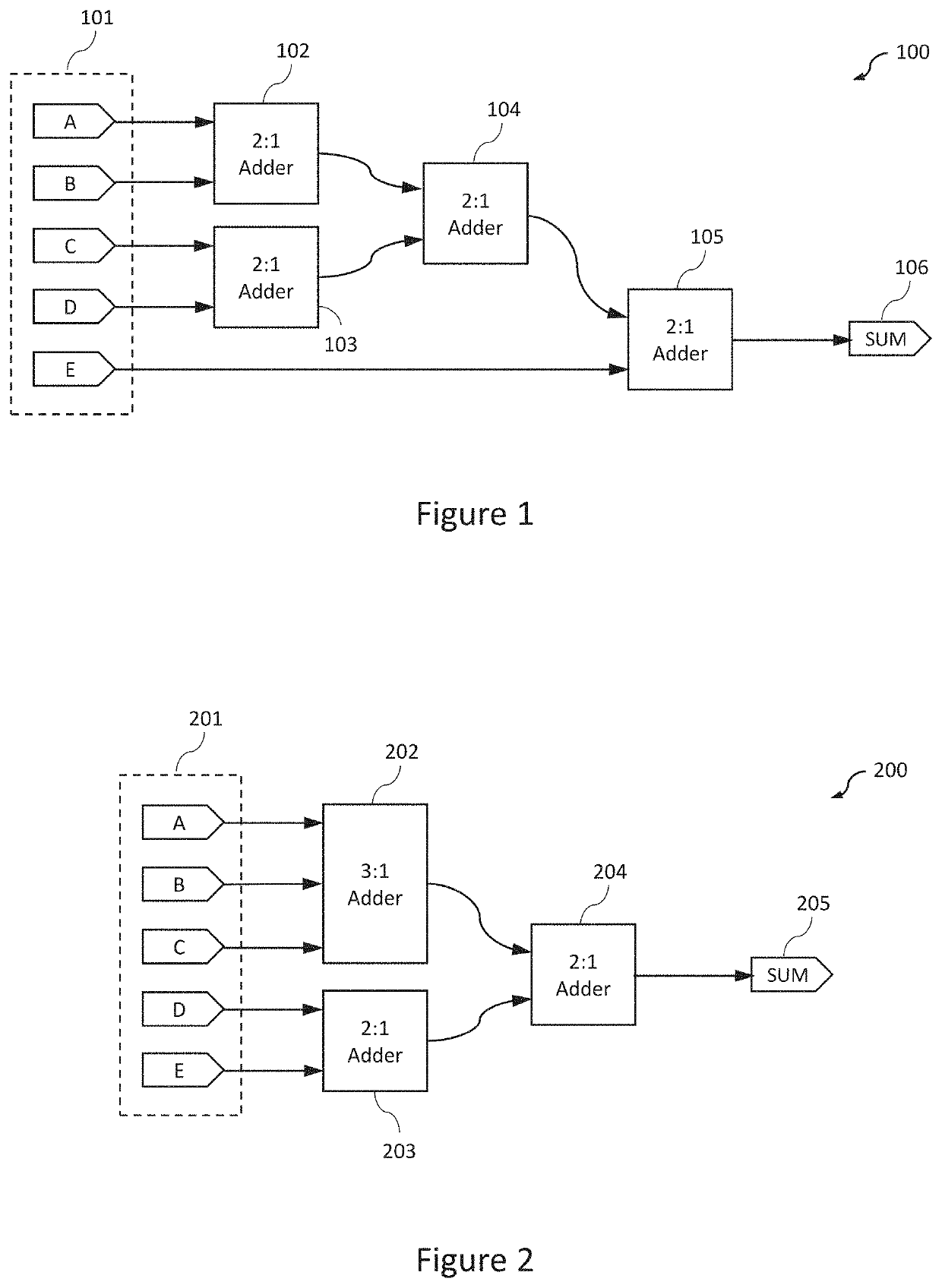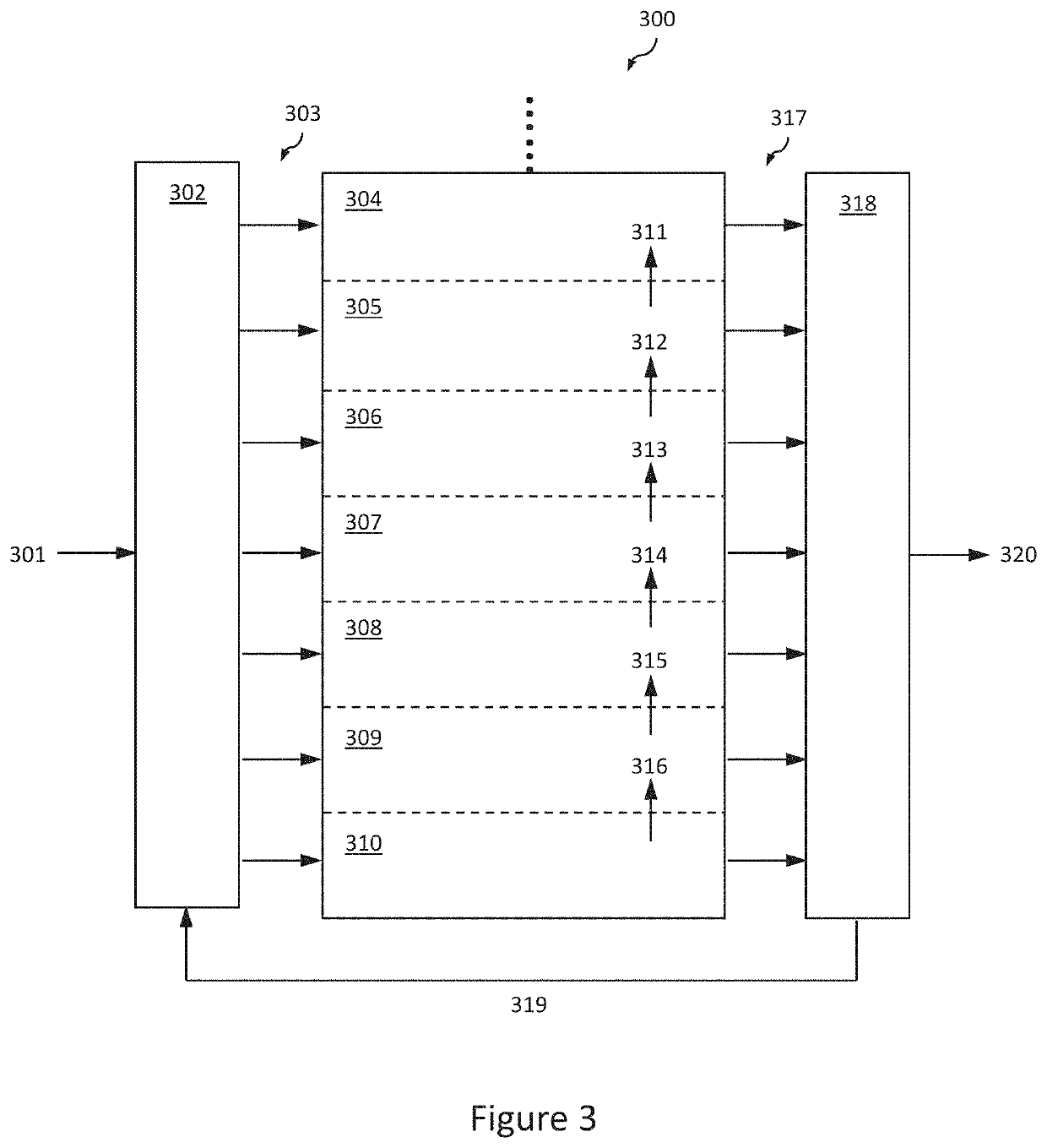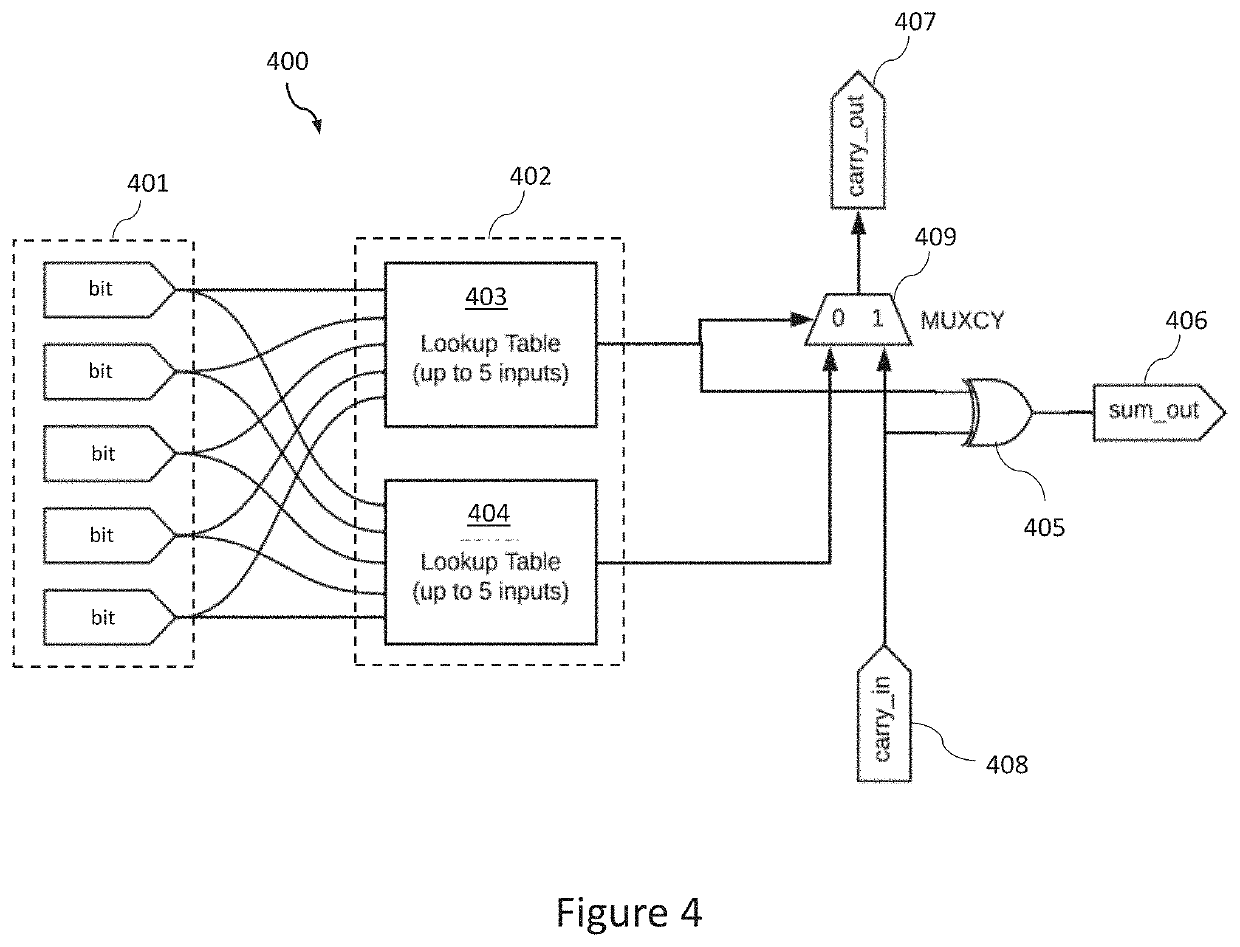Determining Sums Using Logic Circuits
a logic circuit and sum technology, applied in logic circuits, logic circuits, logic circuits characterised by logic functions, etc., can solve the problem that functions consume a large amount of available programmable logic resources
- Summary
- Abstract
- Description
- Claims
- Application Information
AI Technical Summary
Benefits of technology
Problems solved by technology
Method used
Image
Examples
Embodiment Construction
[0050]The following description is presented by way of example to enable a person skilled in the art to make and use the invention. The present invention is not limited to the embodiments described herein and various modifications to the disclosed embodiments will be apparent to those skilled in the art. Embodiments are described by way of example only.
[0051]The examples described herein are be described with reference to a field programmable gate array (FPGA) as an example of a programable logic device (PLD). It is to be understood that the principles described herein could be applied to any other type of logic device, or programmable logic device (PLD).
[0052]FIG. 3 is a simplified schematic of a field programmable gate array (FPGA) 300. In the example shown in FIG. 3, FPGA 300 comprises an input routing block 302, an output routing block 318, and a column of configurable logic blocks (CLBs) 304-310. Although shown separately, input routing block 302 and an output routing block 318...
PUM
 Login to View More
Login to View More Abstract
Description
Claims
Application Information
 Login to View More
Login to View More - R&D
- Intellectual Property
- Life Sciences
- Materials
- Tech Scout
- Unparalleled Data Quality
- Higher Quality Content
- 60% Fewer Hallucinations
Browse by: Latest US Patents, China's latest patents, Technical Efficacy Thesaurus, Application Domain, Technology Topic, Popular Technical Reports.
© 2025 PatSnap. All rights reserved.Legal|Privacy policy|Modern Slavery Act Transparency Statement|Sitemap|About US| Contact US: help@patsnap.com



